Why is Judy Garland the ultimate gay icon?
As a new biopic puts the legendary diva back in the spotlight, the LGBTQ+ community’s love for her may also be rejuvenated – but is it entirely positive
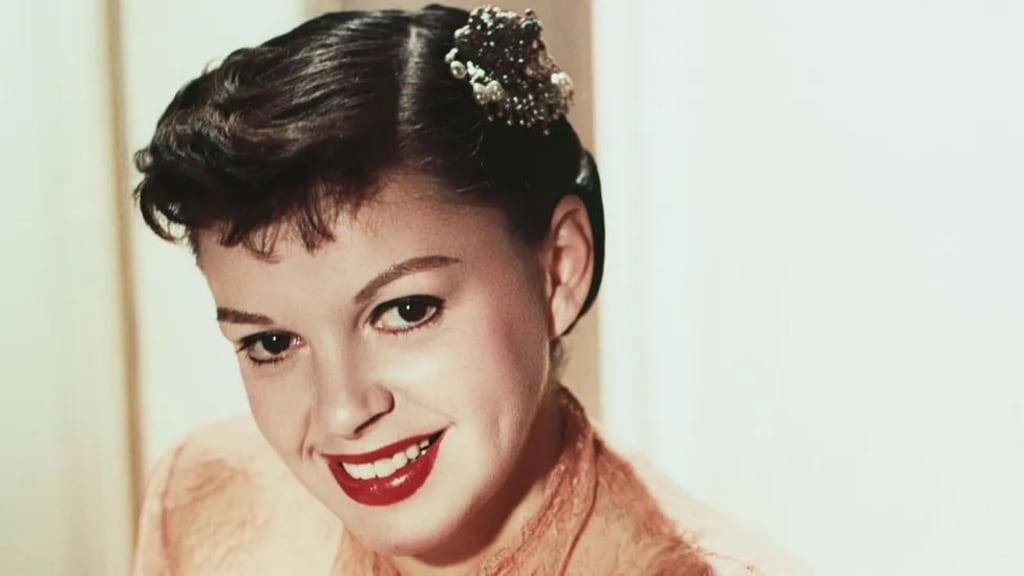
On 25 March, 1969, Judy Garland took to the stage at the Falkoner Center in Copenhagen. As she reached the crescendo of Over the Rainbow – the song which made her a global star aged just 17 – it was unknown to the audience that they were watching her final live performance. Four months later, 47 year-old Garland was found dead in Chelsea, London, after accidentally overdosing on the drugs she had self-medicated with since childhood. One of the headlines would read: “Judy’s voice stilled. The rainbow is gone.”
Fifty years on, Garland superfan Ross Semple, 27, still listens to that Copenhagen concert religiously. “I cry every time I listen to that recording,” he says. “The pain in her voice, knowing what was to come soon after, you can hear it all.” Having seen The Wizard of Oz as a child, Ross was further drawn towards Judy Garland in his late teens, around the same time he came out as gay. He began watching her films, listening to her music and learning about her life. “I want to know as much as I can about her,” he explains. “Because I want to be able to speak with authority about her and understand her, because she deserves that.”
Ross is far from the only gay man to feel such strong affinity with Garland’s work and life. Gay magazine The Advocate once called her the “Elvis of homosexuals”, and in a 1967 review of Garland's concert at New York City’s Palace Theatre, Time Magazine observed that a “disproportionate part of her nightly claque” was gay. Two years earlier, Garland herself had been asked if at a San Francisco press conference if she minded having such a large gay following, to which she responded: “I couldn’t care less. I sing to people!”
Story continues below
Homosexuals understand suffering. And so does Garland – Esquire magazine, 1969
Journalist, author and self-confessed Garland devotee Robert Leleux wrote in the New York Times 2012 that the LGBTQ+ community’s love of Garland – which he dubbed “Judyism” – was becoming “little more than a cultural memory”. But now Judyism may be set to grip a whole new generation with the release of Judy, a biopic starring Renée Zellweger. Set in 1969, when Garland arrived in London for a five-week run of sold-out concerts, the film received rapturous reviews for Zellweger’s performance when it premiered at the Telluride and Toronto film festivals earlier this month. The buzz surrounding the release, partnered with the 2018 remake of A Star is Born – the iconic showbiz drama that earned Garland an Academy Award nomination in 1954 – has brought her distinctly gay legacy back into focus.
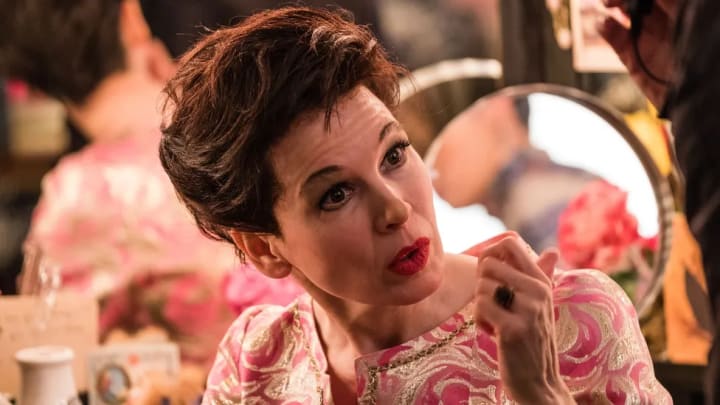
To many gay men, Garland is the mother of all icons. But why? While Garland was still alive, critics made ham-fisted attempts to answer this question. A 1969 review of her Palace Theatre show in Esquire Magazine reads: “Homosexuals tend to identify with suffering. They are a persecuted group and they understand suffering. And so does Garland.” However queer historian Dr Justin Bengry warns against generalising in this way. “It’s important to ask: for whom is Judy Garland resonant, important and iconic?” he tells BBC Culture. “It seems to be a significant category of gay men, in particular, who are invested in celebrities or the camp aesthetic that Garland embodies. But it's also important to recognise that they aren't the totality of gay men.”
The camp that Bengry mentions is significant to Garland’s gay icon status. Queer film historian Jack Babuscio defines camp as “irony, aestheticism, theatricality and humour” – four pillars that form the foundation of Garland’s public persona. In fact, her life story is practically a blueprint for our modern understanding of what makes a gay icon. Analysing her story, from upbringing to death, helps us understand how and why some gay men look to famous women to help them navigate the world.
Small town to Tinseltown
In 1922, Garland was born Frances Ethel Gumm – named after her parents Frank and Ethel – in Grand Rapids, Minnesota. When Garland was four, the family moved to California following rumours that her father, a closeted bisexual, had made sexual advances towards young men. After the family settled in California, Ethel Gumm began to promote her daughters as a performing trio, known as The Gumm Sisters. It was Garland’s mother who first introduced her to drugs. According to Gerald Clarke, author of Garland biography Get Happy, Ethel would give her daughters pills in the morning and at night, saying “I’ve got to get those girls going!” Eventually, after her older sisters both married, Garland was signed by studio giant MGM as a teenager on a seven-year contract. At 17, she starred in her breakout role as Dorothy Gale in The Wizard of Oz.
Like Judy Garland, gay men are brought up to be ordinary. One is not brought up gay – Richard Dyer
This period in Garland’s life, which mirrored closely the story of Dorothy, has contributed significantly to her status as a gay icon. Much like her gingham-dressed alter ego, swept away by the winds into a magical, Technicolor world, Garland was plucked from obscurity to become a cultural icon. In his book, Heavenly Bodies: Film Stars and Society, professor Richard Dyer observes some gay men identify with Garland’s rejection of the ordinariness that she seemed destined for as a child. He theorises that turning out to be abnormal after being “saturated with the values or ordinariness” is a point where Garland and Dorothy’s stories align with the experience of some gay men, encouraging those who perceive themselves as ‘different’ to gravitate towards her.
Body trouble
Garland’s arrival as a major Hollywood star was complicated by a series of disastrous personal relationships, most notably with herself. From a young age, her self-image was relentlessly criticised by film executives who believed that she was unattractive. Alongside her mother, MGM executives controlled her image and encouraged her to take drugs to stay slim. Critical acclaim for her stand-out performances in Meet Me in St Louis and Till the Clouds Roll By coincided with praise of her ‘radiant’ appearance. But low points in Garland’s career were often accompanied by drastic weight gain and there were high-profile suicide attempts.
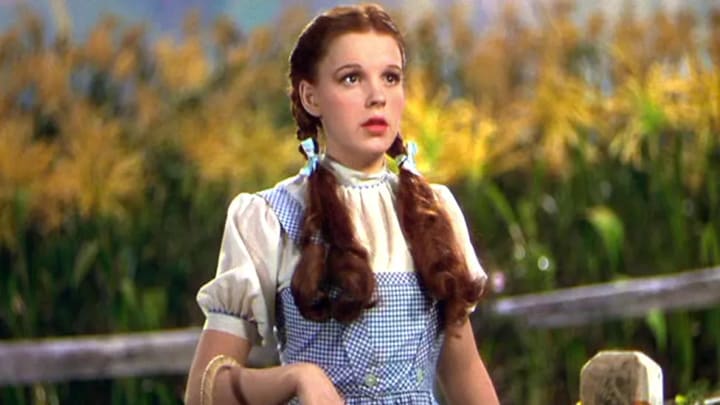
However Garland’s body struggles arguably made her a figure of endearment. As culture journalist Anne Helen Petersen told Karina Longworth in a 2014 episode of her podcast You Must Remember This: “Judy didn’t look like the rest of the MGM stars. She became this avatar for the rejected: not sexy enough, not pretty enough.” This physical insecurity is something that many gay men can identify with, in particular, as a demographic more likely to battle body dysmorphia, harm their bodies, attempt suicide and suffer from eating disorders. In the book, Changing Gay Male Identities, Dr Andrew Cooper suggests that the body can be a complex battleground for many gay men: that the body becomes a key site for projecting a “successful” sense of self to gay peers, but also for embodying success in the eyes of wider society. With this in mind, is it any wonder gay men relate to Garland’s desire to stay slim and successful?
A survivor is born
Garland’s professional and personal lives were both defined by turbulence. She married five times and two of her husbands were, like her father, suspected of being gay or bisexual. Garland first married at 19 when she eloped to Las Vegas with musician David Rose. A year later, when she fell pregnant, her mother convinced her to have an illegal abortion. Drugs and financial instability were a near-constant presence in her life and she was suspended numerous times by MGM for missing shoot days or being incoherent, intoxicated and abusive on set. At 28, she was eventually dropped by MGM shortly after being replaced by Ginger Rogers on The Barkleys of Broadway (1949).
Garland’s lead role in 1954’s A Star is Born was a comeback moment. At 32, she had already been divorced twice and suffered numerous breakdowns. The high-budget project was seen as her final throw of the dice in Hollywood. Garland’s portrayal of Esther Blodgett, an aspiring singer who becomes tortured by her love interest’s addiction issues, is regarded as one of the greatest film performances of all time. In one pivotal scene, she says: “You don’t know what it’s like to watch someone you love crumble away – bit by bit, day by day, in front of your eyes – and stand there helpless… I hate his promises to stop, I hate going home at night and listening to his lies. I hate him for failing and I hate me too.” It is hard to listen to these words without connecting them to her own addiction struggles.
It annoys me when she gets boiled down to just how tragic she was. It's a disservice to her body of work – Ross Semple
Yet the critical acclaim Garland received for A Star is Born was tarnished by its commercial underperformance. Deemed too long, the film had to be cut considerably, leading to a botched edit that left viewers underwhelmed. It flopped at the box office and Warner Bros then cancelled the lucrative multi-film deal Garland had signed with them. She was widely expected to take home the Academy Award for her role in the film, with reporters even waiting by her hospital bedside to capture her reaction as she prepared to give birth. But the Oscar ended up going to Grace Kelly, signalling that Garland’s Hollywood star was not going to be reignited after all.
At this point, the motif of Garland as a ‘survivor’ becomes central to her gay appeal. A Star is Born further blurred the line between her work and life, with Richard Dyer identifying this as the moment where Garland’s image of being “damaged goods” becomes an essential part of her star persona and gay icon status. He argues that, from then on, Garland’s work and life tells a story of survival, and of someone trying to assert some form of control in a world that was set up to destroy her.
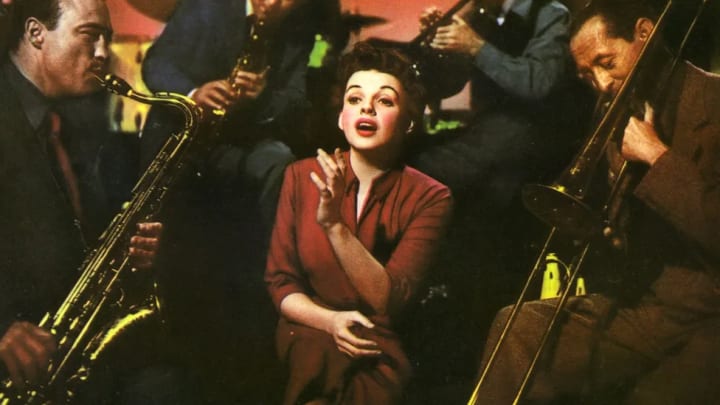
Like a true survivor, Garland rebounded from the commercial failure of A Star is Born. She found a new niche as a live singer, performing in a drug-induced haze on an endless tour after financial troubles left her permanently broke. Audiences, many of whom were gay, roared with laughter at her quick wit and gave her the validation for her performing that she had always craved. A live recording of her 1961 concert at Carnegie Hall in New York won four Grammys, including album of the year, making Garland the first woman to win the award.
Superfan Semple describes a tension between his admiration for Garland’s work and his fascination with her life story. “It annoys me when she gets boiled down to just how tragic she was,” he says. “Because her performances were so brilliant and she made some beautiful films. It's a disservice to her body of work to paint her as solely a tragic figure, but I’d be lying if I said I wasn’t obsessed with the story behind the curtain too.” He also observes that the gay love for “survivor” women who have been cast aside continues today. “Female pop acts who are largely forgotten by mainstream society still headline Pride events every year,” he says. “Judy was an early incarnation of that.”
Some gay men find more affinity in straight female stars than they do in those from their own community, a process that queer academic José Muñoz calls “disidentification”. He thinks that LGBTQ+ people often assign queerness to characters or stories that are not explicitly queer as a “coping mechanism”. As an example, Muñoz suggests that when a gay man “identified” with Garland, he was “writing his way into the mainstream culture in which his own story could never be told.”
Gay men often reject gay cultural figures that they perceive as geared towards straight people – such as the cast members of Netflix’s Queer Eye
But contrastingly, in the book How to be Gay, queer historian David Halperin describes a tension with the “mainstream” that leads gay men to be “highly critical, if not contemptuous, of their own artists, writers and filmmakers”. He says that gay men often fail to warm to gay characters and celebrities because they “don’t often like the representations of gay men that gay men produce.” Halperin suggests that this is because most mainstream representations of gay men, from pop culture to politics, pander to “acceptable” heterosexual norms. He draws a key distinction between gay culture – where “conventional” white gay men are dominant – and gay subculture – where women, drag queens, queer people of colour and trans people are more visible. This causes some gay men to reject gay cultural figures that they perceive as geared towards straight people – such as, to use two very current examples, the cast members of Netflix’s Queer Eye and gay Democratic presidential candidate Pete Buttigeig. Instead many embrace subcultural – and in their eyes, more subversive – female narratives like Garland’s.
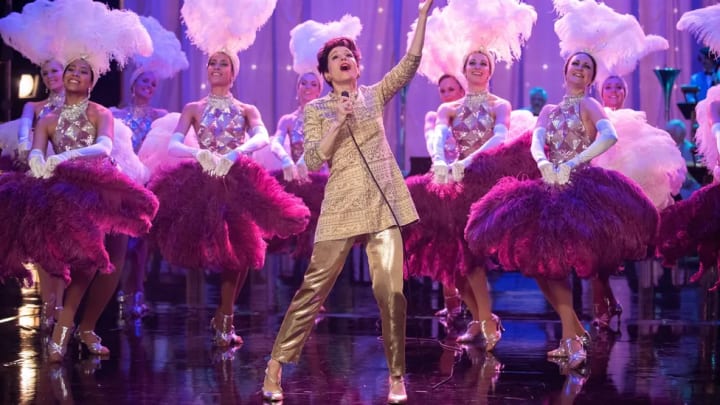
So, depending on which way you look at it, “disidentifying” with Garland is either gay men’s way of feeling aligned to mainstream culture – or, in fact, rejecting it wholesale.
An icon in death
It is an unavoidable truth that Garland’s tragic and untimely death has also contributed to her status as a gay icon, making her a timeless figure. On the day of Garland’s funeral, gay men lined the streets and wept for her. Dyer notes that, at the time, gathering to watch Garland’s funeral gave them “permission to be gay in public for once.” But decades later, you don’t have to look far to see how Garland was the first in a continuing lineage of ‘tragic’ female celebrities who have acquired the status of gay icons.
Queens would come to a Judy Garland concert and then scream at her when she was too drunk to finish it – Dr Michael Bronski
Elements of Garland’s story can be found in that of Diana, Princess of Wales, and her mistreatment at the hands of the press; Princess Margaret, with her ongoing substance issues, and marriage to an exploitative man who was rumoured to be gay; and Britney Spears, whose child stardom culminated in a very public divorce and mental health struggles. From Amy Winehouse, Whitney Houston and Kesha, to Lily Allen, Demi Lovato and Garland’s own daughter Liza Minnelli, women continue to be exploited, damaged and, in the worst cases, destroyed by fame.
Gay men need to be mindful of our own culpability in this cycle. ‘Friend of Dorothy’ has long been a popular code word for gay men, but not all friends of Dorothy were friends of Judy. As Dr Michael Bronski, a Harvard University professor and the author of books on queer history and gay culture, asserts in a recent article on the dark side of “stan” (superfan) culture: "There is a long history of gay male fan culture latching onto famous women and then turning on them. Queens would come to a Judy Garland concert and then scream at her when she was too drunk to finish it. The women have changed – it's no longer Marlene Dietrich and Judy Garland. But the dynamic remains in Western culture.”
Bronski is right: that pattern didn’t end with Garland’s death. Whether it’s Katy Perry becoming, as journalist Brian O’Flynn writes, “gay Twitter’s punching bag”, or gay fans dressing as ‘bald Britney’ for Halloween and turning up to meet-and-greets dressed in costume from Spears’s infamous 2007 breakdown, gay men can be increasingly fickle towards famous women.
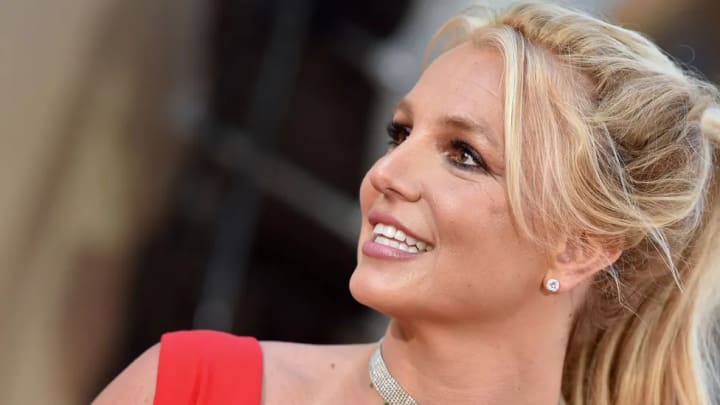
Idolising these women is one thing, but we shouldn’t treat them like playthings for our entertainment. The personal troubles of women like Winona Ryder, Amanda Bynes or Naomi Campbell might generate funny punchlines, but they’re also real-life problems. When push comes to shove, are gay men really there for the women we claim to worship?
On screen too, there are several works in the gay pop-cultural canon that glorify destructive female behaviour – while being financed and created by men. Mommie Dearest, a biopic of screen icon Joan Crawford, which portrays her as an abusive mother, is a gay classic. And from the streets of Wisteria Lane to Big Little Lies and the Real Housewives franchise, pop-culture encourages us to love female characters when they’re screaming hysterically, so we can condense their pain into hilariously camp GIFs and say “yassss kween” as they smash up their surroundings.
Camp is a huge part of what draws gay men towards women like Garland. There is camp to be found in her tragedy, her successes and her bad behaviour. But some, such as gay author Andrew Britton have argued that the existence of camp actually depends on the restrictive gender dynamics that it claims to oppose. Much has been written about the suppressive effect of the “male gaze” on women, but surely the “gay gaze” is also to blame.
Fifty years after Garland’s death, her legacy lives on. Many gay men turn to women like Judy Garland to help them navigate their own experiences of the world. But we should also reflect on the way we treat them. Because if we don’t commit to treating the icons who we love with compassion, or creating the “kinder, gentler world” Garland once said she longed for, then are we much better than the people who tried to break her?
About the Creator
Mao Jiao Li
When you think, act like a wise man; but when you speak, act like a common man.






Comments
There are no comments for this story
Be the first to respond and start the conversation.